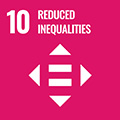- Docente: Marco Brianti
- Credits: 6
- SSD: SECS-P/01
- Language: English
- Teaching Mode: Traditional lectures
- Campus: Bologna
- Corso: Second cycle degree programme (LM) in Applied Economics and Markets (cod. 5969)
-
from Feb 11, 2025 to Mar 12, 2025
Learning outcomes
The course aims at familiarizing the student with the tools that Macroeconomics offers for the analysis of the most relevant issues in the policy debate. The student will be expected to be familiar with and to use models explaining the short-run determinants of aggregate demand, consumption and investment; to be able to analyze problems concerning the determinants of unemployment and the labor market outcomes; to be familiar with and be able to analyze the sustainability of public debt and its effects on the economy; to be familiar with and be able to analyze the determinants o of inflation and the scope for monetary policy.
Course contents
Part 1: Acquiring Analytical Tools
- Two-Period Consumption-Saving Model
- Infinite-Horizon Consumption-Saving Model without Uncertainty
- Infinite-Horizon Consumption-Saving Model with Uncertainty
Part 2: The Ramsey-Cass-Koopmans Model
- General Setup
- Equilibrium Analysis (Solution Technique)
- Social Planner’s Problem
- Comparative Statics
- Dynamic Responses
Part 3: Real Business Cycle (RBC) Model without Capital
- Business Cycle Facts (Empirical Evidence)
- General Setup
- Analytical Solution
- Responses to Technology Shocks
- Responses to Government Spending Shocks
Part 4: Real Business Cycle (RBC) Model with Capital
- General Setup
- Calibration
- Numerical Solution with Dynare
- Impulse Responses to Technology Shocks
- Impulse Responses to Government Spending Shocks
Part 5: New Keynesian Models without Capital
- General Setup
- Analytical Solution
- Calibration
- Numerical Solution
- Impulse Responses to Technology Shocks
- Impulse Responses to Government Spending Shocks
- Impulse Responses to Monetary Policy Shocks
Part 6: Advanced Topics (if time permits)
- New Keynesian Models with Capital
- Role of Financial Frictions
- Indeterminate Models and Sunspot Equilibria
- Frictional Labor Market
Readings/Bibliography
- Primary Textbook: M. Azzimonti, P. Krusell, A. McKay, and T. Mukoyama, Macroeconomics (Open Source). Available online: https://phdmacrobook.org/
- Handouts: Supplementary materials provided during lectures, available for download.
The maximum possible score is 30 cum laude, in case all anwers are correct, complete and formally rigorous.
The grade is graduated as follows:
<18 failed
18-23 sufficient
24-27 good
28-30 very good
30 e lode excellent
Teaching methods
- Lectures: Delivered in a traditional in-person format, covering theoretical foundations and practical applications.
- Homework Assignments: Designed to reinforce concepts discussed in lectures. Submission details and deadlines will be provided throughout the course.
Assessment methods
- Homework Assignments: Regularly assigned to reinforce key concepts. Submission deadlines and guidelines will be provided in class.
- Final Exam: A comprehensive assessment covering all course topics. Details on format and grading criteria will be announced in advance.
The maximum possible score is 30 cum laude, in case all answers are correct, complete and formally rigorous.
The grade is graduated as follows:
<18 failed
18-23 sufficient
24-27 good
28-30 very good
30 e lode excellent
Teaching tools
- MATLAB: Freely available for University of Bologna students. Ensure access through the university's licensing system.
- Dynare: Required for some course exercises. Download it from the official website: https://www.dynare.org/
Office hours
See the website of Marco Brianti
SDGs


This teaching activity contributes to the achievement of the Sustainable Development Goals of the UN 2030 Agenda.
